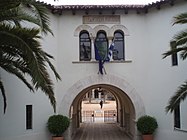
Size of this preview: 800 × 570 pixels. Other resolutions: 320 × 228 pixels | 640 × 456 pixels | 1,024 × 729 pixels | 1,080 × 769 pixels.
Original file (1,080 × 769 pixels, file size: 250 KB, MIME type: image/jpeg)
File history
Click on a date/time to view the file as it appeared at that time.
| Date/Time | Thumbnail | Dimensions | User | Comment | |
|---|---|---|---|---|---|
| current | 21:18, 9 February 2017 |  | 1,080 × 769 (250 KB) | Shakko | {{Information |Description=Jesus Hominum Salvator Depictions of the Crucifixion, the Resurrection and the Descent into Hell are combined in the initials of the abbreviated Latin inscription I(esus) H(ominum) S(alvator) (Jesus Saviour of Mankind), the... |
File usage
The following 2 pages use this file:
Global file usage
The following other wikis use this file:
- Usage on sk.wikipedia.org
- Usage on www.wikidata.org

